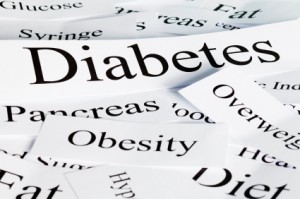 According to the National Diabetes Fact Sheet for 2011 newly released by the U.S. Centers for Disease Control and Prevention (CDC), nearly 26 million Americans (8.3% of all Americans or 11.3% of adults age 20 and older) now have diabetes, and about 27 percent of those with diabetes—7 million Americans—do not know they have the disease.
According to the National Diabetes Fact Sheet for 2011 newly released by the U.S. Centers for Disease Control and Prevention (CDC), nearly 26 million Americans (8.3% of all Americans or 11.3% of adults age 20 and older) now have diabetes, and about 27 percent of those with diabetes—7 million Americans—do not know they have the disease.
In addition, an estimated 79 million U.S. adults, 35% of all adults, have prediabetes, a condition in which blood sugar levels are higher than normal, but not high enough to be diagnosed as diabetes. Prediabetes raises a person’s risk of type 2 diabetes, heart disease and stroke. Read more about Prediabetes and Testing Blood Sugar Levels at the Mayo Clinic.
These numbers are up significantly from 2008, when the CDC estimated that 23.6 million Americans, or 7.8 percent of the population, had diabetes and another 57 million adults had prediabetes.
Of people aged 65 and older, fully 50% now have pre-diabetes and nearly 27% have actual diabetes, according to the CDC’s new new report.
Robert Henry, MD, of the University of California San Diego, who is president for science and medicine of the American Diabetes Association, was quoted in an article in MedPageToday as characterizing this increase in diabetes as a previously predicted and continuing epidemic in the U.S. “This just confirms that diabetes is continuing to increase in this country. We predicted it, and it appears to be true — the epidemic is continuing unabated,” he said.
Ann Albright, Ph.D, R.D., director of CDC’s Division of Diabetes Translation, said “These distressing numbers show how important it is to prevent type 2 diabetes and to help those who have diabetes manage the disease to prevent serious complications such as kidney failure and blindness,” said . “We know that a structured lifestyle program that includes losing weight and increasing physical activity can prevent or delay type 2 diabetes.”
According to the National Institutes of Health, people develop type 2 diabetes because their bodies don’t use insulin properly, a condition known as insulin resistance, so the amount of blood sugar increases. High blood sugar damages blood cells and nerves, leading to heart disease, stroke, blindness, kidney disease, nerve problems, gum infections and amputations.
According to the NIH, most people with pre-diabetes develop diabetes within 10 years unless they lose 5 to 7 percent of their body weight (about 10 to 15 pounds for someone who weighs 200 pounds).
The CDC states several explanations for the increase in prevelence of diabetes and prediabetes reflected by their 2011 estimates:
- More people are developing diabetes.
- Many people are living longer with diabetes, which raises the total number of those with the disease.
- The 2011 fact sheet, unlike previous CDC fact sheets, for the first time used both fasting glucose and hemoglobin A1c levels — rather than glucose alone — to derive estimates for undiagnosed diabetes and prediabetes. This means that the estimates of undiagnosed diabetes and prediabetes are not directly comparable to estimates in previous fact sheets.
In a separate study published late last year, the CDC projected that at current trends, as many as 1 in 3 U.S. adults could have diabetes by 2050.
Ninety to ninety-five percent of diabetes cases are “Type 2 diabetes,” in which the body gradually loses its ability to use and produce insulin, as described above. Risk factors for type 2 diabetes include older age, obesity, family history, having diabetes while pregnant (gestational diabetes), and a sedentary lifestyle. In addition, certain race/ ethnic groups are at higher risk for the disease, including African-Americans, Hispanics, American Indians/Alaska Natives, and some Asian-Americans and Pacific Islanders.
The CDC reports that, “diabetes is the seventh leading cause of death in the United States. People with diabetes are more likely to suffer from complications such as heart attacks, strokes, high blood pressure, kidney failure, blindness and amputations of feet and legs. Diabetes costs $174 billion annually, including $116 billion in direct medical expenses.”
More information about what you can do to determine if you are at risk and to prevent or control diabetes, including several publications on how to prevent or control diabetes, risk factors for diabetes, and other information on diabetes prevention and control, is available from the National Diabetes Education Program—a joint effort of CDC and the National Institutes of Health. See also this article by CNN Health: Reversing diabetes is possible.
Further facts and statistics on Diabetes in the CDC’s National Diabetes Fact Sheet for 2011.
See also the CDC’s recent release summarizing the Diabetes Fact Sheet for 2011 at » CDC Press Release.
_____________
Copyright © 2011 Care-Help LLC












Recent Comments from our Online Community